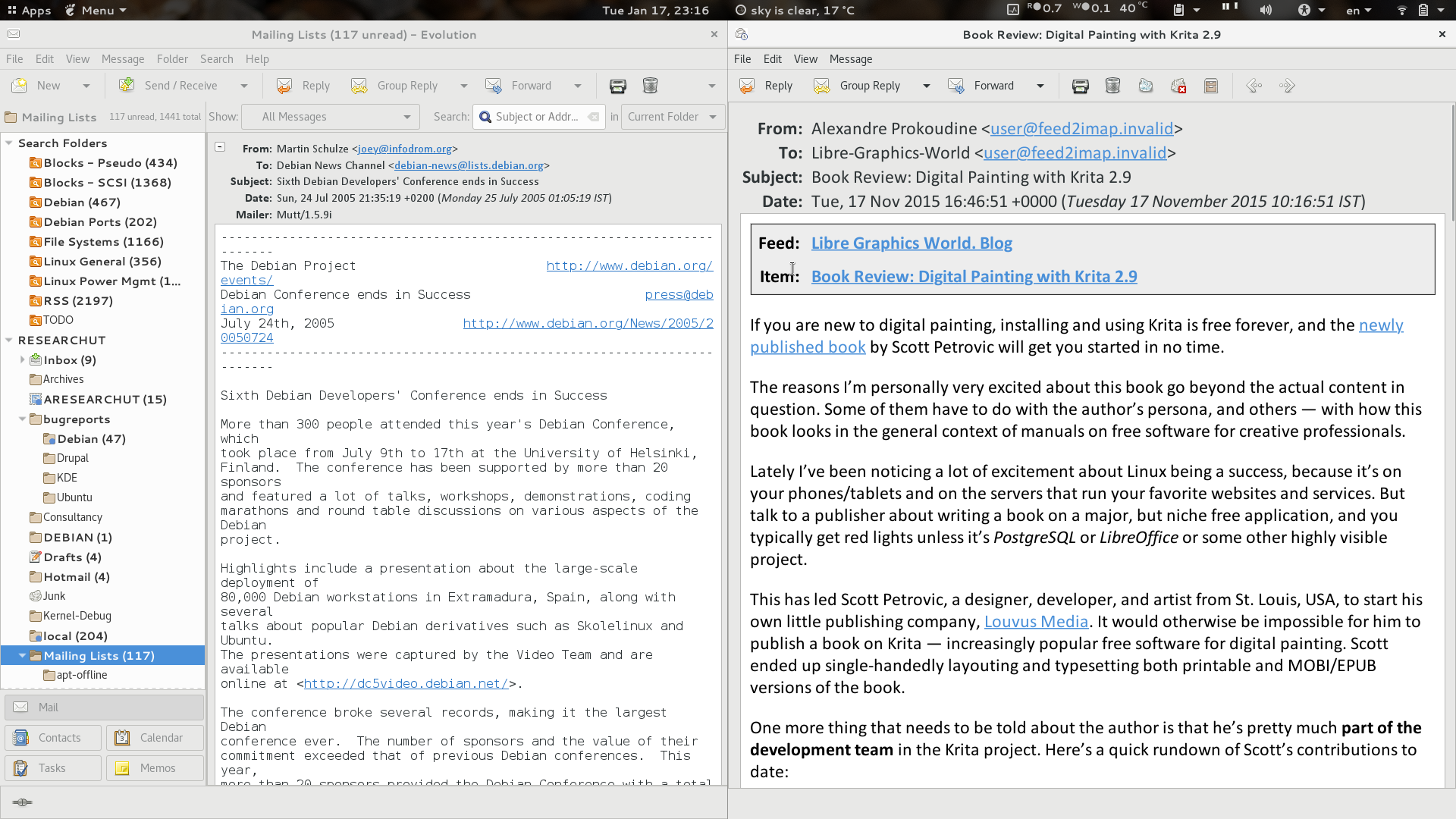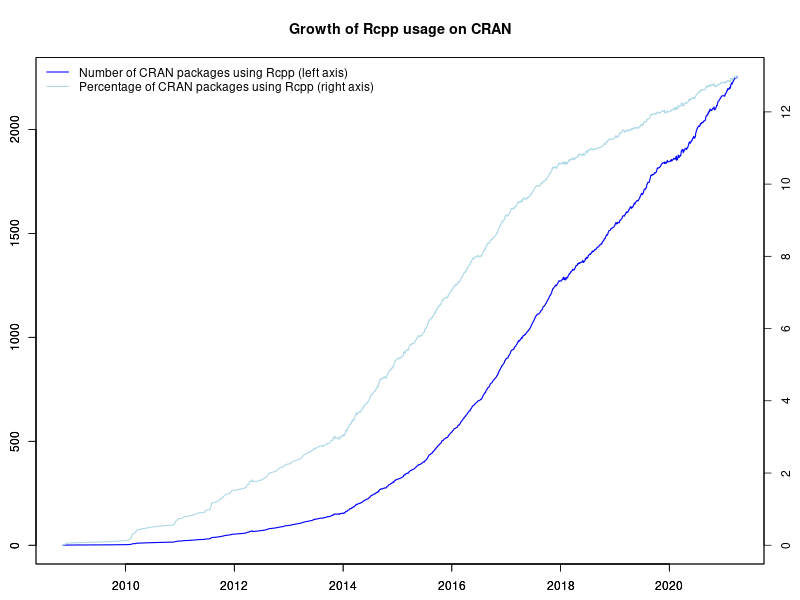Review:
The Lion, the Witch and the Wardrobe, by C.S. Lewis
| Illustrator: |
Pauline Baynes |
| Series: |
Chronicles of Narnia #1 |
| Publisher: |
Collier Books |
| Copyright: |
1950 |
| Printing: |
1978 |
| ISBN: |
0-02-044220-3 |
| Format: |
Mass market |
| Pages: |
186 |
Although it's been more than 20 years since I last read it, I believe I
have read
The Lion, the Witch and the Wardrobe more times than any
other book. The count is certainly in double digits. As you might guess,
I also have strong opinions about it, some of which are unorthodox, and
I've been threatening to write this review for years. It seemed a fitting
choice for my 1000th review.
There is quite a lot that can and has been said about this book and this
series, and this review is already going to be much too long, so I'm only
going to say a fraction of it. I'm going to focus on my personal
reactions as someone raised a white evangelical Christian but no longer
part of that faith, and the role this book played in my religion. I'm not
going to talk much about some of its flaws, particularly Lewis's treatment
of race and gender. This is not because I don't agree they're there, but
only that I don't have much to say that isn't covered far better in other
places.
Unlike my other reviews, this one will contain major spoilers. If you
have managed to remain unspoiled for a 70-year-old novel that spawned
multiple movies and became part of the shared culture of evangelical
Christianity, and want to stay that way, I'll warn you in ALL CAPS when
it's time to go. But first, a few non-spoiler notes.
First, reading order. Most modern publications of
The Chronicles of
Narnia will list
The Magician's Nephew as the first book. This
follows internal chronological order and is at C.S. Lewis's request.
However, I think Lewis was wrong. You should read this series in original
publication order, starting with
The Lion, the Witch and the
Wardrobe (which I'm going to abbreviate as
TLtWatW like everyone
else who writes about it).
I will caveat this by saying that I have a bias towards reading books in
the order an author wrote them because I like seeing the development of
the author's view of their work, and I love books that jump back in time
and fill in background, so your experience may vary. But the problem I
see with the revised publication order is that
The Magician's
Nephew explains the origins of Narnia and, thus, many of the odd
mysteries of
TLtWatW that Lewis intended to be mysterious. Reading
it first damages both books, like watching a slow-motion how-to video for
a magic trick before ever seeing it performed. The reader is not primed
to care about the things
The Magician's Nephew is explaining, which
makes it less interesting. And the bits of unexpected magic and mystery
in
TLtWatW that give it so much charm (and which it needs, given
the thinness of the plot) are already explained away and lose appeal
because of it.
I have read this series repeatedly in both internal chronological order
and in original publication order. I have even read it in strict
chronological order, wherein one pauses halfway through the last chapter
of
TLtWatW to read
The Horse and His Boy before returning.
I think original publication order is the best. (
The Horse and His
Boy is a side story and it doesn't matter that much where you read it as
long as you read it after
TLtWatW. For this re-read, I will follow
original publication order and read it fifth.)
Second, allegory.
The common understanding of
TLtWatW is that it's a Christian
allegory for children, often provoking irritated reactions from readers
who enjoyed the story on its own terms and later discovered all of the
religion beneath it. I think this view partly misunderstands how Lewis
thought about the world and there is a more interesting way of looking at
the book. I'm not as dogmatic about this as I used to be; if you want to
read it as an allegory, there are plenty of carefully crafted parallels to
the gospels to support that reading. But here's my pitch for a different
reading.
To C.S. Lewis, the redemption of the world through the death of Jesus
Christ is as foundational a part of reality as gravity. He spent much of
his life writing about religion and Christianity in both fiction and
non-fiction, and this was the sort of thing he constantly thought about.
If somewhere there is another group of sentient creatures, Lewis's
theology says that they must fit into that narrative in some way. Either
they would have to be unfallen and thus not need redemption (roughly the
position taken by
The Space Trilogy), or they would need their own
version of redemption. So yes, there are close parallels in Narnia to
events of the Christian Bible, but I think they can be read as speculating
how Christian salvation would play out in a separate creation with talking
animals, rather than an attempt to disguise Christianity in an allegory
for children. It's a subtle difference, but I think Narnia more an answer
to "how would Christ appear in this fantasy world?" than to "how do I get
children interested in the themes of Christianity?", although certainly
both are in play.
Put more bluntly, where other people see allegory, I see the further
adventures of Jesus Christ as an anthropomorphic lion, which in my opinion
is an altogether more delightful way to read the books.
So much for the preamble; on to the book.
The Pevensie kids, Peter, Susan, Edmund, and Lucy, have been evacuated to
a huge old house in the country due to the air raids (setting this book
during World War II, something that is passed over with barely a mention
and not a hint of trauma in a way that a modern book would never do).
While exploring this house, which despite the scant description is still
stuck in my mind as the canonical huge country home, Lucy steps into a
wardrobe because she wants to feel the fur of the coats. Much to her
surprise, the wardrobe appears not to have a back, and she finds herself
eventually stepping into a snow-covered pine forest where she meets a Fawn
named Mr. Tumnus by an unlikely lamp-post.
MAJOR SPOILERS BELOW, so if you don't want to see those, here's
your cue to stop reading.
Two things surprised me when re-reading
TLtWatW. The first, which
I remember surprising me every time I read it, is how far into this (very
short) book one has to go before the plot kicks into gear. It's not until
"What Happened After Dinner" more than a third in that we learn much of
substance about Narnia, and not until "The Spell Begins to Break" halfway
through the book that things start to happen. The early chapters are
concerned primarily with the unreliability of the wardrobe portal, with a
couple of early and brief excursions by Edmund and Lucy, and with Edmund
being absolutely awful to Lucy.
The second thing that surprised me is how little of what happens is driven
by the kids. The second half of
TLtWatW is about the fight between
Aslan and the White Witch, but this fight was not set off by the children
and their decisions don't shape it in any significant way. They're
primarily bystanders; the few times they take action, it's either
off-camera or they're told explicitly what to do. The arguable exception
is Edmund, who provides the justification for the final conflict, but he
functions more as plot device than as a character with much agency. When
that is combined with how much of the story is also on rails via its need
to recapitulate part of the gospels (more on that in a moment), it makes
the plot feel astonishingly thin and simple.
Edmund is the one protagonist who gets to make some decisions, all of them
bad. As a kid, I hated reading these parts because Edmund is an ass, the
White Witch is obviously evil, and everyone knows not to eat the food.
Re-reading now, I have more appreciation for how Lewis shows Edmund's
slide into treachery. He starts teasing Lucy because he thinks it's funny
(even though it's not), has a moment when he realizes he was wrong and
almost apologizes, but then decides to blame his discomfort on the victim.
From that point, he is caught, with some help from the White Witch's
magic, in a spiral of doubling down on his previous cruelty and then
feeling unfairly attacked. Breaking the cycle is beyond him because it
would require admitting just how badly he behaved and, worse, that he was
wrong and his little sister was right. He instead tries to justify
himself by spreading poisonous bits of doubt, and looks for reasons to
believe the friends of the other children are untrustworthy. It's
simplistic, to be sure, but it's such a good model of how people slide
into believing conspiracy theories and joining hate groups. The
Republican Party is currently drowning in Edmunds.
That said, Lewis does one disturbing thing with Edmund that leaped out on
re-reading. Everyone in this book has a reaction when Aslan's name is
mentioned. For the other three kids, that reaction is awe or delight.
For Edmund, it's mysterious horror.
I know where Lewis is getting this from, but this is a nasty theological
trap. One of the problems that religion should confront directly is
criticism that questions the moral foundations of that religion. If one
postulates that those who have thrown in with some version of the Devil
have an instinctual revulsion for God, it's a free intellectual dodge.
Valid moral criticism can be hand-waved away as Edmund's horrified
reaction to Aslan: a sign of Edmund's guilt, rather than a possible flaw
to consider seriously. It's also, needless to say, not the effect you
would expect from a god who wants universal salvation! But this is only
an odd side note, and once Edmund is rescued it's never mentioned again.
This brings us to Aslan himself, the Great Lion, and to the heart of why I
think this book and series are so popular. In reinterpreting Christianity
for the world of Narnia, Lewis created a far more satisfying and relatable
god than Jesus Christ, particularly for kids.
I'm not sure I can describe, for someone who didn't grow up in that faith,
how central the idea of a personal relationship with Jesus is to
evangelical Christianity. It's more than a theological principle; it's
the standard by which one's faith is judged. And it is very difficult for
a kid to mentally bootstrap themselves into a feeling of a personal
relationship with a radical preacher from 2000 years ago who spoke in
gnomic parables about subtle points of adult theology. It's hard enough
for adults with theological training to understand what that phrase is
intended to mean. For kids, you may as well tell them they have a
personal relationship with Aristotle.
But a giant, awe-inspiring lion with understanding eyes, a roar like
thunder, and a warm mane that you can bury your fingers into? A lion who
sacrifices himself for your brother, who can be comforted and who comforts
you in turn, and who makes a glorious surprise return?
That's the
kind of god with which one can imagine having a personal relationship.
Aslan felt physical and embodied and present in the imagination in a way
that Jesus never did.
I am certain I was not the only Christian kid for whom Aslan was much more
viscerally real than Jesus, and who had a tendency to mentally substitute
Aslan for Jesus in most thoughts about religion.
I am getting ahead of myself a bit because this is a review of
TLtWatW and not of the whole series, and Aslan in this book is
still a partly unformed idea. He's much more mundanely present here than
he is later, more of a field general than a god, and there are some bits
that are just wrong (like him clapping his paws together). But the scenes
with Susan and Lucy, the night at the Stone Table and the rescue of the
statues afterwards, remain my absolute favorite parts of this book and
some of the best bits of the whole series. They strike just the right
balance of sadness, awe, despair, and delight.
The image of a lion also lets Lewis show joy in a relatable way. Aslan
plays, he runs, he wrestles with the kids, he thrills in the victory over
evil just as much as Susan and Lucy do, and he is clearly having the time
of his life turning people back to flesh from stone. The combination of
translation, different conventions, and historical distance means the
Bible has none of this for the modern reader, and while people have tried
to layer it on with Bible stories for kids, none of them (and I read a
lot of them) capture anything close to the sheer joy of this story.
The trade-off Lewis makes for that immediacy is that Aslan is a wonderful
god, but
TLtWatW has very little
religion. Lewis can
have his characters interact with Aslan directly, which reduces the need
for abstract theology and difficult questions of how to know God's will.
But even when theology is unavoidable, this book doesn't ask for the type
of belief that Christianity demands.
For example, there is a crucifixion parallel, because in Lewis's world
view there would have to be. That means Lewis has to deal with
substitutionary atonement (the belief that Christ died for the sins of the
world), which is one of the hardest parts of Christianity to justify. How
he does this is fascinating.
The Narnian equivalent is the Deep Magic, which says that the lives of all
traitors belong to the White Witch. If she is ever denied a life, Narnia
will be destroyed by fire and water. The Witch demands Edmund's life,
which sets up Aslan to volunteer to be sacrificed in Edmund's place. This
triggers the Deeper Magic that she did not know about, freeing Narnia from
her power.
You may have noticed the card that Lewis is palming, and to give him
credit, so do the kids, leading to this exchange when the White Witch is
still demanding Edmund:
"Oh, Aslan!" whispered Susan in the Lion's ear, "can't we I mean,
you won't, will you? Can't we do something about the Deep Magic?
Isn't there something you can work against it?"
"Work against the Emperor's magic?" said Aslan, turning to her with
something like a frown on his face. And nobody ever made that
suggestion to him again.
The problem with substitutionary atonement is why would a supposedly
benevolent god create such a morally abhorrent rule in the first place?
And Lewis totally punts. Susan is simply not allowed to ask the question.
Lewis does try to tackle this problem elsewhere in his apologetics for
adults (without, in my opinion, much success). But here it's just a part
of the laws of this universe, which all of the characters, including
Aslan, have to work within.
That leads to another interesting point of theology, which is that if you
didn't already know about the Christian doctrine of the trinity, you would
never guess it from this book. The Emperor-Beyond-the-Sea and Aslan are
clearly separate characters, with Aslan below the Emperor in the pantheon.
This makes rules like the above work out more smoothly than they do in
Christianity because Aslan is bound by the Emperor's rules and the Emperor
is inscrutable and not present in the story. (The Holy Spirit is Deity
Not-appearing-in-this-book, but to be fair to Lewis, that's largely true
of the Bible as well.)
What all this means is that Aslan's death is presented straightforwardly
as a magic spell. It works because Aslan has the deepest understanding of
the fixed laws of the Emperor's magic, and it looks nothing like what we
normally think of as religion. Faith is not that important in this book
because Aslan is physically present, so it doesn't require any faith for
the children to believe he exists. (The Beavers, who believed in him from
prophecy without having seen him, are another matter, but this book never
talks about that.) The structure of religion is therefore remarkably
absent despite the story's Christian parallels. All that's expected of
the kids is the normal moral virtues of loyalty and courage and opposition
to cruelty.
I have read this book so many times that I've scrutinized every word, so I
have to resist the temptation to dig into every nook and cranny: the
beautiful description of spring, the weird insertion of Lilith as Adam's
first wife, how the controversial appearance of Santa Claus in this book
reveals Lewis's love of Platonic ideals... the list is endless, and the
review is already much longer than normal. But I never get to talk about
book endings in reviews, so one more indulgence.
The best thing that can be said about the ending of
TLtWatW is that
it is partly redeemed by the start of
Prince Caspian. Other than
that, the last chapter of this book has always been one of my least
favorite parts of
The Chronicles of Narnia.
For those who haven't read it (and who by this point clearly don't mind
spoilers), the four kids are immediately and improbably crowned Kings and
Queens of Narnia. Apparently, to answer the Professor from earlier in the
book, ruling magical kingdoms is what they were teaching in those schools?
They then spend years in Narnia, never apparently giving a second thought
to their parents (you know, the ones who are caught up in World War II,
which prompted the evacuation of the kids to the country in the first
place). This, for some reason, leaves them talking like medieval
literature, which may be moderately funny if you read their dialogue in
silly voices to a five-year-old and is otherwise kind of tedious.
Finally, in a hunt for the white stag, they stumble across the wardrobe
and tumble back into their own world, where they are children again and
not a moment has passed.
I will give Lewis credit for not doing a full reset and having the kids
not remember anything, which is possibly my least favorite trope in
fiction. But this is almost as bad. If the kids returned immediately,
that would make sense. If they stayed in Narnia until they died, that
arguably would also make sense (their poor parents!). But growing up in
Narnia and then returning as if nothing happened doesn't work. Do they
remember all of their skills? How do you readjust to going to school
after you've lived a life as a medieval Queen? Do they remember any of
their friends after fifteen years in Narnia? Argh. It's a very
"adventures are over, now time for bed" sort of ending, although the next
book does try to patch some of this up.
As a single book taken on its own terms,
TLtWatW is weirdly slight,
disjointed, and hits almost none of the beats that one would expect from a
children's novel. What saves it is a sense of delight and joy that
suffuses the descriptions of Narnia, even when locked in endless winter,
and Aslan. The plot is full of holes, the role of the children in that
plot makes no sense, and Santa Claus literally shows up in the middle of
the story to hand out plot devices and make an incredibly sexist statement
about war. And yet, I memorized every gift the children received as a
kid, I can still feel the coziness of the Beaver's home while Mr. Beaver
is explaining prophecy, and the night at the Stone Table remains ten times
more emotionally effective for me than the description of the analogous
event in the Bible.
And, of course, there's Aslan.
"Safe?" said Mr. Beaver. "Don't you hear what Mrs. Beaver tells you?
Who said anything about safe? 'Course he isn't safe. But he's good.
He's the king, I tell you."
Aslan is not a
tame lion, to use the phrase that echos through this
series. That, I think, is the key to the god that I find the most
memorable in all of fantasy literature, even in this awkward, flawed, and
decidedly strange introduction.
Followed by
Prince Caspian, in which the children return to a
much-changed Narnia. Lewis has gotten most of the obligatory cosmological
beats out of the way in this book, so subsequent books can tell more
conventional stories.
Rating: 7 out of 10
 Recently, Raphael Hertzog published ideas [1] about how to make Debian more attractive for big enterprises. One missing key stone here is the possibility to sign up for an enterprise support subscription scheme. Another question tackles how to provide such a support scheme within Debian, without disturbing the current flow of how Debian is developed these days.
And, there are likely more questions to asks, riddles to solve, and hurdles to overcome.
We want to discuss this topic, brainstorm on it, collect new ideas and also hear your concerns on a public channel. Over the past weeks there already have been mail exchanges off-list.
We want to reboot this privately started discussion now in public (as that's where it belongs) starting +/- at the end of the coming week via the currently quite inactive Debian mailing list 'debian-enterprise' [2]. Please join the discussion (and the mailing list) [3] if interested in this topic.
light & love
Recently, Raphael Hertzog published ideas [1] about how to make Debian more attractive for big enterprises. One missing key stone here is the possibility to sign up for an enterprise support subscription scheme. Another question tackles how to provide such a support scheme within Debian, without disturbing the current flow of how Debian is developed these days.
And, there are likely more questions to asks, riddles to solve, and hurdles to overcome.
We want to discuss this topic, brainstorm on it, collect new ideas and also hear your concerns on a public channel. Over the past weeks there already have been mail exchanges off-list.
We want to reboot this privately started discussion now in public (as that's where it belongs) starting +/- at the end of the coming week via the currently quite inactive Debian mailing list 'debian-enterprise' [2]. Please join the discussion (and the mailing list) [3] if interested in this topic.
light & love
 I ve mostly had the preference of controlling my data rather than depend on someone else. That s one reason why I still believe email to be my most reliable medium for data storage, one that is not plagued/locked by a single entity. If I had the resources, I d prefer all digital data to be broken down to its simplest form for storage, like email format, and empower the user with it i.e. their data.
Yes, there are free services that are indirectly forced upon common users, and many of us get attracted to it. Many of us do not think that the information, which is shared for the free service in return, is of much importance. Which may be fair, depending on the individual, given that they get certain services without paying any direct dime.
I ve mostly had the preference of controlling my data rather than depend on someone else. That s one reason why I still believe email to be my most reliable medium for data storage, one that is not plagued/locked by a single entity. If I had the resources, I d prefer all digital data to be broken down to its simplest form for storage, like email format, and empower the user with it i.e. their data.
Yes, there are free services that are indirectly forced upon common users, and many of us get attracted to it. Many of us do not think that the information, which is shared for the free service in return, is of much importance. Which may be fair, depending on the individual, given that they get certain services without paying any direct dime.





 Note: This is the continuation of
Note: This is the continuation of 
 As of today,
As of today,  Ten years ago, I
Ten years ago, I  No doubt it was someone's idea of a joke to release Silence of the Lambs on Valentine's Day, thirty years ago today. Although it references Valentines at one point and hints at a deeper relationship between Starling and Lecter, it was clearly too tempting to jeopardise so many date nights. After all, how many couples were going to enjoy their ribeyes medium-rare after watching this?
Given the muted success of Manhunter (1986), Silence of the Lambs was our first real introduction to Dr. Lecter. Indeed, many of the best scenes in this film are introductions: Starling's first encounter with Lecter is probably
No doubt it was someone's idea of a joke to release Silence of the Lambs on Valentine's Day, thirty years ago today. Although it references Valentines at one point and hints at a deeper relationship between Starling and Lecter, it was clearly too tempting to jeopardise so many date nights. After all, how many couples were going to enjoy their ribeyes medium-rare after watching this?
Given the muted success of Manhunter (1986), Silence of the Lambs was our first real introduction to Dr. Lecter. Indeed, many of the best scenes in this film are introductions: Starling's first encounter with Lecter is probably  We first see Buffalo Bill at the thirty-two minute mark. (Or, more tellingly, he sees us.) Delaying the viewer's introduction to the film's villain is the mark of a secure and confident screenplay, even if it was popularised by the budget-restricted Jaws (1975) which hides the eponymous shark for one hour and 21 minutes.
We first see Buffalo Bill at the thirty-two minute mark. (Or, more tellingly, he sees us.) Delaying the viewer's introduction to the film's villain is the mark of a secure and confident screenplay, even if it was popularised by the budget-restricted Jaws (1975) which hides the eponymous shark for one hour and 21 minutes. The messenger turns to watch Starling run off to Crawford. Are his eyes involuntarily following the movement or he is impressed by Starling's gumption? Or, almost two decades after John Berger's male gaze, is he simply checking her out? The film, thankfully, leaves it to us.
The messenger turns to watch Starling run off to Crawford. Are his eyes involuntarily following the movement or he is impressed by Starling's gumption? Or, almost two decades after John Berger's male gaze, is he simply checking her out? The film, thankfully, leaves it to us. The cold open of Hannibal (2001) makes for a worthy comparison. The audience remembers they loved the dialogue between Starling and Lecter, so it is clumsily mentioned. We remember Barney too, so he is shoehorned in as well. Lacking the confidence to introduce new signifiers to its universe, Red Dragon (2002) aside, the hollow, 'clip show' feel of Hannibal is a taste of the zero-calorie sequels to come in the next two decades.
The cold open of Hannibal (2001) makes for a worthy comparison. The audience remembers they loved the dialogue between Starling and Lecter, so it is clumsily mentioned. We remember Barney too, so he is shoehorned in as well. Lacking the confidence to introduce new signifiers to its universe, Red Dragon (2002) aside, the hollow, 'clip show' feel of Hannibal is a taste of the zero-calorie sequels to come in the next two decades. Dr. Lecter's upright stance when we meet him reminds me of the third act of Alfred Hitchcock's Notorious (1946), another picture freighted with meaningful stairs. Stanley Kubrick's The Killing (1956) began the now-shopworn trope of concealing a weapon in a flower box.
Dr. Lecter's upright stance when we meet him reminds me of the third act of Alfred Hitchcock's Notorious (1946), another picture freighted with meaningful stairs. Stanley Kubrick's The Killing (1956) began the now-shopworn trope of concealing a weapon in a flower box. Over the course of the last year and a half, I ve been doing some self-directed
learning on how radios work. I ve gone from a very basic understanding of
wireless communications (there s usually some sort of antenna, I guess?) all
the way through the process of learning about and implementing a set of
libraries to modulate and demodulate data using my now formidable stash of SDRs.
I ve been implementing all of the RF processing code from first principals and
purely based on other primitives I ve written myself to prove to myself that I
understand each concept before moving on.
I figured that there was a fun capstone to be done here - the blind reverse
engineering and implementation of the protocol my cheep Amazon power switch
uses to turn on and off my Christmas Tree. All the work described in this post
was done over the course of a few hours thanks to help during the demodulation
from
Over the course of the last year and a half, I ve been doing some self-directed
learning on how radios work. I ve gone from a very basic understanding of
wireless communications (there s usually some sort of antenna, I guess?) all
the way through the process of learning about and implementing a set of
libraries to modulate and demodulate data using my now formidable stash of SDRs.
I ve been implementing all of the RF processing code from first principals and
purely based on other primitives I ve written myself to prove to myself that I
understand each concept before moving on.
I figured that there was a fun capstone to be done here - the blind reverse
engineering and implementation of the protocol my cheep Amazon power switch
uses to turn on and off my Christmas Tree. All the work described in this post
was done over the course of a few hours thanks to help during the demodulation
from  After taking a capture, I started to look at understanding what the modulation
type of the signal was, and how I may go about demodulating it.
Using
After taking a capture, I started to look at understanding what the modulation
type of the signal was, and how I may go about demodulating it.
Using  Next, I started to measure the smallest pulse, and see if I could infer the
symbols per second, and try to decode it by hand. These types of signals are
generally pretty easy to decode by eye.
Next, I started to measure the smallest pulse, and see if I could infer the
symbols per second, and try to decode it by hand. These types of signals are
generally pretty easy to decode by eye.


 After some googling, I found a single lone
After some googling, I found a single lone
 It s a bummer that we missed the clock sync / preamble pulse before the data
message, but that s OK somehow. It also turns out that 8 or 10 bit series of of
0"s wasn t clock sync at all - it was part of the address! Since it also turns
out that all devices made by this manufacturer have the hardcoded address of
It s a bummer that we missed the clock sync / preamble pulse before the data
message, but that s OK somehow. It also turns out that 8 or 10 bit series of of
0"s wasn t clock sync at all - it was part of the address! Since it also turns
out that all devices made by this manufacturer have the hardcoded address of
 And even more interestingly, one of our scancodes ( Off , which is 0x94) shows up just
below this table, in the examples.
And even more interestingly, one of our scancodes ( Off , which is 0x94) shows up just
below this table, in the examples.
 Over all, I think this tells us we have the right bits to look at for
determining the scan code! Great news there!
Over all, I think this tells us we have the right bits to look at for
determining the scan code! Great news there!
 I have recently become an OpenJDK Author. Practically this means I can query
the
I have recently become an OpenJDK Author. Practically this means I can query
the  Unfortunately, in Debian in particular, libgit2 is undergoing a
Unfortunately, in Debian in particular, libgit2 is undergoing a 
